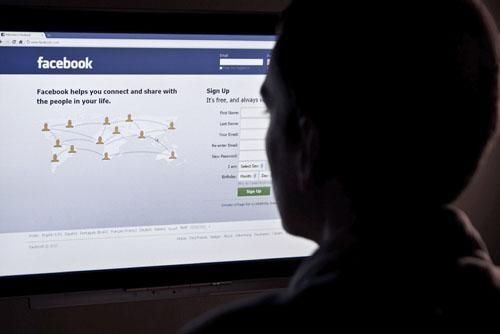Facebook Friends Predicted by Size of Brain Structures

To friend or not to friend? It might depend on your brain. Researchers have discovered that the number of Facebook friends you have coincides with the size of certain brain regions.
Those brain regions are associated with creating memories of names and faces as well as how we interpret social cues such as gaze and body movements. Slightly different regions were pinpointed when the researchers compared brain sizes in relation to real-life social networks, indicating online and real-world interactions could be using different sets of social skills. [10 Things You Didn't Know About You]
"Social networks exist in many forms — in the real world, in cyberspace and in many other forms," study researcher Geraint Rees, of the University College London, said during a press conference Oct. 17. "They are a particular aspect of human behavior that surrounds and affects many aspects of how we live our daily lives."
Your brain on Facebook
The researchers used functional magnetic resonance imaging to create brain scans of 125 healthy college students. They compared the sizes of various brain regions with each participant’s number of Facebook friends and real-life friends. They repeated the study on a separate group of 40 students.
When people had high numbers of Facebook friends, the researchers noted certain brain regions were larger than they were for students with few Facebook friends. Those regions included the superior temporal sulcus and the middle temporal gyrus, both of which process and interpret basic social signals; the entorhinal cortex, which pairs up names and faces; and the amygdalae, which help us recognize emotional facial expressions.
The researchers also compared the brain data with the analysis of the students' real-life social networks. Surprisingly, the researchers saw different patterns in brain changes. While they also found larger amygdalae in people who had large real-life social networks, they didn't see any differences in the sulcus, gyrus and cortex between "loners" and gregarious types.
Sign up for the Live Science daily newsletter now
Get the world’s most fascinating discoveries delivered straight to your inbox.
Third factor?
One limitation of the study was that researchers couldn’t say which came first – whether large social networks cause thickening of certain brain areas, or larger areas of certain brain regions cause one to have larger social networks. The idea that an action can change the brain has been shown in past research; for instance, studies suggest physical training can actually bulk up regions of the brain's motor cortex.
There also could be a separate change leading to both higher friend number and larger brain areas, Eric Nelson, a researcher at the National Institute of Mental Health, told LiveScience. "Something like intelligence, perhaps, or liking to be on a computer," said Nelson, who wasn't involved in the study.
Rees agreed and noted these are preliminary studies. He advised caution in interpreting the study's conclusions.
"It is also possible, as it is with any correlation, that there's a third factor that's driving it, that's driving the changes in brain structure and the number of friends," Rees said. "The significance isn't so much that it tells the whole story, but it gives us a way to answer important questions."
Friends versus connections
Sam Roberts, a researcher at England's University of Chester, near Liverpool, said the findings are interesting, but he observed that the sheer number of any student's Facebook friends doesn't tell you much about how the student interacts with people on the site.
Analysis of anonymous user data by the Facebook data team has shown that most users mutually communicate with only about 10 to 20 of their friends every month, even if they have 500 on the site. Women interact with between four (if they have 50 friends) and 16 (if they have 500) friends on Facebook; the numbers are slightly lower for men (three to 10).
"You can look at the number of friends people have on Facebook, but to really understand what that means you have to look at what they are doing on Facebook with their friends," Roberts, who wasn't involved in the study, told LiveScience. "The majority of their friends they won't be in contact with."
The study was published today (Oct. 18) in the journal Proceedings of the Royal Society B: Biological Sciences.
You can follow LiveScience staff writer Jennifer Welsh on Twitter @microbelover. Follow LiveScience for the latest in science news and discoveries on Twitter @livescience and on Facebook.
Jennifer Welsh is a Connecticut-based science writer and editor and a regular contributor to Live Science. She also has several years of bench work in cancer research and anti-viral drug discovery under her belt. She has previously written for Science News, VerywellHealth, The Scientist, Discover Magazine, WIRED Science, and Business Insider.












